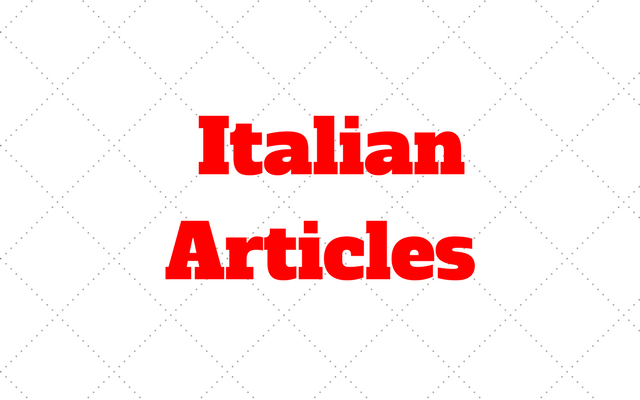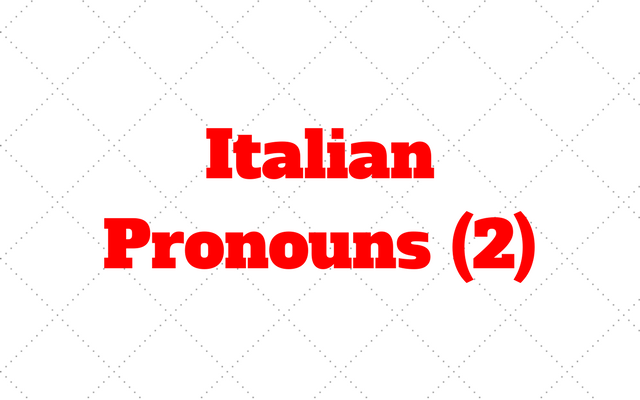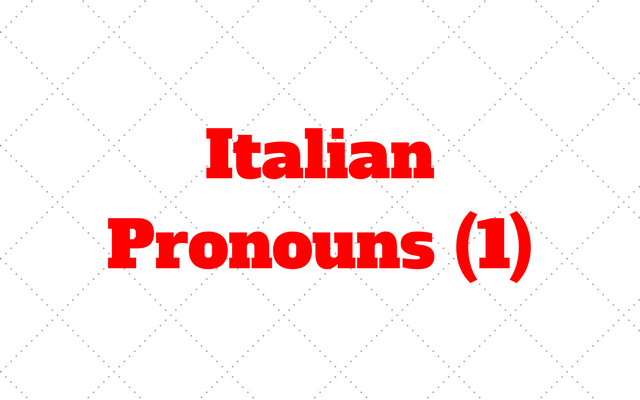
Two main categories of articles
Articles are those little words that precede nouns and that announce their gender and number.
Example:
Lo scoiattolo – the squirrel (masculine, singular)
Una maestra – a teacher (feminine, singular)
Gli alunni – the students (masculine, plural)
Le finestre – the windows (feminine, plural)
In Italian, there are two main categories:
Definite Articles / Gli articoli determinativi
Correspond to the English article “The”. They are used to indicate something specific, already known by the listener (la forchetta, il libro, l’amico).
Indefinite Articles / Gli articoli indeterminativi
Are equivalent to the English articles “A/An”. They introduce a new object or person in the conversation; they can also indicate something generic, indefinite (un gatto, una città, un giardino).
In addition to these two categories we have gli Articoli Partitivi (the Partitive Articles), that indicate an indefinite part or quantity and translate the English “some” “any” (del pane, della frutta, dei soldi).
Let’s start our journey in the world of Italian articles!
Gli articoli determinativi: il, lo, la, i, gli, le
Let’s start with the masculine articles:
| MASCHILI (Masculine) | ||
| Singular | Plural | Use |
| IL | I | In front of consonants |
| LO | GLI | In front of gn, ps, pn, z, x, y, s + consonant |
| L’ | GLI | In front of vowels |
Some examples:
Il cane – the dog Lo xilofono – the xylophone
Il tavolo – the table Lo psicologo – the psychologist
L’aeroplano – the plane Gli animali – the animals
L’albero – the tree I giorni – the days
Now the feminine:
| FEMMINILE (Feminine) | ||
| Singular | Plural | Use |
| LA | LE | In front of consonants |
| L’ | LE | In front of vowels |
Some examples:
La sedia – the chair Le ragazze – the girls
L’altalena – the swing Le magliette – the t-shirts
The articoli determinativi are used:
– with people, animals or things already mentioned in the text and known by the listener → Vicino a Franco c’è un libro. Il libro è di Michela.
– with people, animals or things that can’t be confused with others → Spegni la TV (there is only one tv in the room)
– with nouns used to indicate an entire class of people, animals and things → La macchina è un ottimo mezzo di trasporto.
– to indicate body parts → Fabio ha i capelli corti.
Gli articoli indeterminativi: un, uno, una, un’
Let’s have a look!
| MASCHILI | USE |
| UN | In front of consonants and vowels; in front of /w/ as whisky, uovo, uomo… |
| UNO | In front of gn, ps, pn, z, x, y, s + consonant |
| FEMMINILI | USE |
| UNA | In front of consonants (same as “la”) |
| UN’ | In front of vowels |
*** REMEMBER:
– the articoli indeterminativi are only used with singular nouns
– the apostrophe is only used in front of feminine nouns → un’amica and un amico.
Some examples:
Una casa – a house Un giardino – a garden
Un maiale – a pig Un’azione – an action
L’articolo indeterminativo is used:
– with people, animals or things unknown to the listener → C’è un giardino in via Roma
– with people, animals or things in general → Vorrei un gelato (an icecream in general, not a specific one!)
– with body parts, when you have more than one → Mi fa male un ginocchio (one knee is hurting, the other is fine!)
Gli articoli partitivi: del, dello, della, dei, degli, delle
This articulated prepositions (del, dello, della, dei, degli, delle) are used as articles to indicate an indefinite part or quantity of something.
Some examples:
Ho letto un libro → Ho letto dei libri (we don’t know how many!)
Vorrei del pane (He/She would like some bread, we don’t know how much)
C’è del sapone in bagno? (is there any soap in the bathroom?)
Articles: drill and practice ◄◄◄
Please check our “Preposition” Articles to learn more about Articulated Prepositions.






